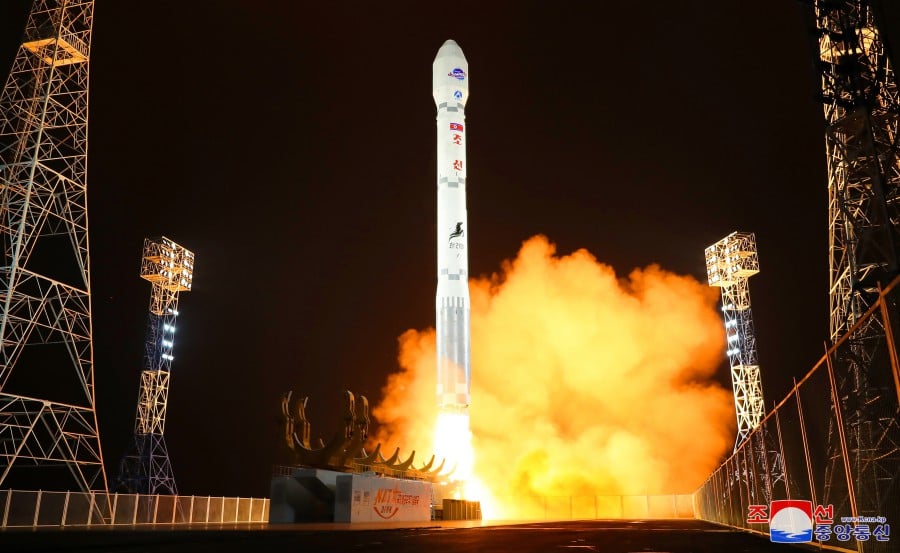World
North Korean Military Satellite Launch Fails After Rocket Explodes – USNI News

North Korea’s attempt to put a second military reconnaissance satellite into orbit failed on Monday when the rocket carrying the satellite exploded mid-flight.
According to state media, the explosion was likely due to the reliability of the rocket engine. Meanwhile, Japan reported on Monday that a WL-10 (Wing Loong-10) unmanned aerial vehicle had been operating over the East China Sea that day, marking the first time the drone had been seen operating near Japan.
State media Korean Central News Agency (KCNA) reported that North Korea’s National Aerospace Technology Administration (NATA) conducted the launch of reconnaissance satellite Malligyong-1-1 at the Sohae Satellite Launching Ground in Cholsan County of North Pyongan Province. The vice general director of NATA stated that the launch failed due to “the air blast of the new-type satellite carrier rocket during the first-stage flight.”
According to KCNA, an examination by experts from North Korea’s satellite launch preparation committee reached a preliminary conclusion that the cause of the accident was the newly developed liquid oxygen plus petroleum engine, adding that other causes will be examined.
North Korea successfully launched a satellite into orbit in November 2023 following two failed launch attempts in May and August, and plans to launch three more satellites this year. The satellite launches are considered violations of U.N. resolutions because of their use of ballistic-missile technology for the carrier rockets.
Earlier, North Korea informed the Japan Coast Guard, which coordinates and issues navigational safety warnings for Navarea XI region, that it planned to conduct a launch in a window from Sunday to June 3 and designated three areas into which debris from the rocket may fall.
South Korea’s Joint Chiefs of Staff said on Monday that it detected the suspected satellite-carrying rocket being launched from the Tongchang-ri area in northwest North Korea at 10:44 p.m. and that the rocket was headed south over the Yellow Sea and 10:46 p.m. The projectile was detected as multiple debris landed in the Yellow Sea on the North Korean side.
The JCS also stated it had been tracking the launch preparations in close coordination with the U.S. and prepared by deploymenting South Korean, U.S and Japanese Aegis destroyers to specific areas of each country in advance, and activating the trilateral missile warning information sharing system. The JCS called the North Korean launch a provocative act in violation of U.N. Security Council resolutions that prohibit the use of ballistic-missile technology. On Tuesday, the JCS released a video taken by a South Korean patrol ship showing the rocket in flight prior to its explosion.
U.S. Indo-Pacific Command issued a statement on the launch, along with calling it a brazen violation of multiple U.N. Security Council resolutions.
“We are aware of the DPRK’s May 27 launch using ballistic missile technology, which, is a brazen violation of multiple unanimous U.N. Security Council resolutions, raises tensions, and risks destabilizing the security situation in the region and beyond. This launch involved technologies that are directly related to the DPRK intercontinental ballistic missile program,” read the statement.
“We have assessed that this event did not pose an immediate threat to U.S. personnel, territory, or that of our allies, but will continue to monitor the situation.”
Japan Defense Minister Minoru Kihara in a press conference on Monday said the fact that North Korea has once again launched a ballistic missile is a serious and imminent threat to Japan’s national security, as well as a threat to the peace and security of the region and the international community. He also stated that Japan had lodged a protest to North Korea and condemned the launch through the Japanese Embassy in Beijing.
In a Tuesday press conference, Kihara said that the details of the launch are being analyzed by Japan, the U.S. and South Korea, but based on the information obtained so far, Monday’s launch was a failed satellite launch. “Even if the launch was intended to launch a satellite, it violates the relevant UN Security Council resolution that prohibits any launch by North Korea using ballistic missile technology and is a serious matter concerning the safety of the Japanese people,” Kihara said.
Kihara said on May 29, 2023, the order for Japan’s PAC-3 Patriot missile units and Aegis ballistic missile defense destroyers to destroy any North Korean missile that threatens Japanese territory remains in force and that the Ministry of Defense would continue to evaluate and analyze the situation before deciding when to stand down from the current posture.
In other developments, Japan’s Joint Staff Office in a Monday release stated that on the morning of that day, a Chinese WL-10 unmanned aerial vehicle was sighted flying in the East China Sea, and Japan Air Self-Defense Force fighter aircraft were scrambled in response. The release noted this was the first time a WL-10 had been sighted operating in Japan’s air defense identification zone. The release also included a photo of the WL-10 taken by the intercepting Japanese fighters.







:max_bytes(150000):strip_icc()/roundup-writereditor-loved-deals-tout-f5de51f85de145b2b1eb99cdb7b6cb84.jpg)


